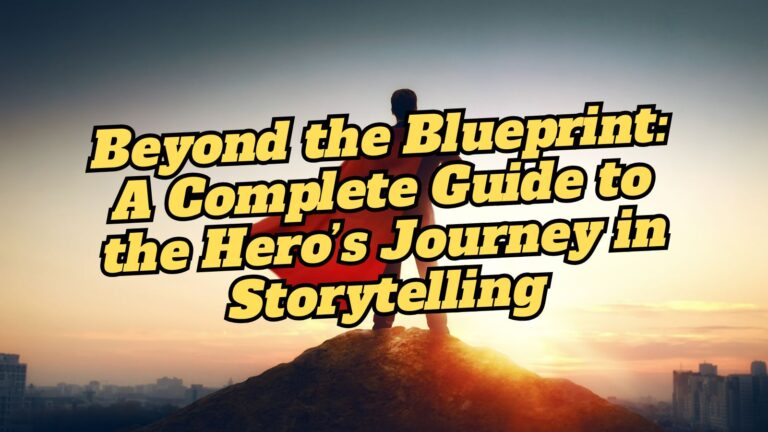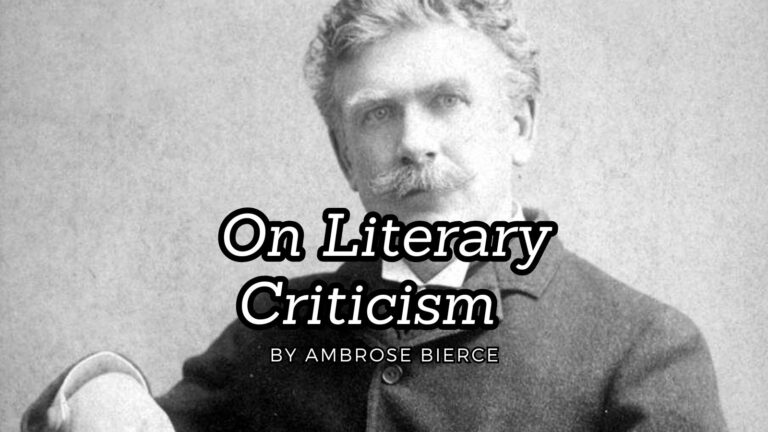
What is a frame narrative?
A frame narrative, also known as a story within a story, is a literary technique in which the main narrative serves as a framework for a series of smaller, embedded narratives. In this structure, the outer story (or frame) introduces and contextualizes the inner story (or stories), usually related by one or more characters from the frame. Storytellers have employed this technique for centuries, dating back to ancient Sanskrit literature and the Middle Eastern folk tale collection “One Thousand and One Nights.”
Frame narratives gained prominence in Western literature during the Middle Ages, with notable examples such as Geoffrey Chaucer’s “The Canterbury Tales” and Giovanni Boccaccio’s “The Decameron.” These works showcase the technique’s ability to unite a diverse set of characters and their individual stories under a unifying narrative framework. Throughout the centuries, frame narratives have continued to evolve and adapt to various forms of storytelling, from novels and short stories to films, television series, and even video games.
Frame narrative is a powerful storytelling device that adds depth, complexity, and perspective to a story. By nesting stories within stories, authors can create multiple layers of meaning, explore diverse themes, and offer a variety of viewpoints on a central subject. The frame narrative allows writers to engage readers on multiple levels, drawing them in with a relatable outer story while inviting them to delve into the rich tapestry of the inner narratives. Through this technique, storytellers can weave intricate tales that challenge readers to consider the interconnectedness of stories and how they shape our understanding of the world.
How Frame Narrative Works
A frame narrative is a complex structure consisting of two main components: the outer story (or frame) and the inner story (or embedded narrative). The outer story serves as a framework that introduces and contextualizes the inner story, usually related to one or more characters from the frame.
A. The structure of a Frame Narrative
- Outer story (frame): The outer story is the primary narrative that sets the stage for the inner story or stories. It often features a narrator or a group of characters who engage in a conversation, a journey, or an event that leads to the telling of the inner story. The outer story provides a context for the inner story and may be used to comment on, critique, or reflect upon the themes and events of the embedded narrative.
- Inner story (embedded narrative): The inner story is the secondary narrative embedded within the outer story. It is usually related by one or more characters from the frame and can take various forms, such as a personal anecdote, a historical account, or a fictional tale. The inner story often explores themes, conflicts, or ideas relevant to the characters in the outer story, and it may illuminate, challenge, or transform their perspectives.
B. The relationship between the outer and inner stories: The outer and inner stories in a frame narrative are interconnected and often inform one another. The outer story provides a context and a reason for telling the inner story, while the inner story may shed light on the characters, themes, or conflicts present in the outer story. The relationship between the two narratives can be complementary, contrasting, or even contradictory, creating a dynamic and multi-layered storytelling experience.
C. The role of the narrator in Frame Narrative: The narrator plays a crucial role in a frame narrative, as they are responsible for both the outer and inner stories. In the outer story, the narrator may be a character who participates in the events or a more detached figure observing and commenting on the action. In the inner story, the narrator may be one of the characters from the frame or an entirely new voice. The narrator’s perspective, reliability, and motivations can significantly impact how the reader interprets and engages with the story, adding complexity to the narrative structure.
Famous Examples of Frame Narrative in Literature
Frame narrative has been employed in numerous literary works throughout history, showcasing the technique’s versatility and effectiveness in storytelling. Here are three notable examples:
A. “The Canterbury Tales” by Geoffrey Chaucer
- The Outer Story: In “The Canterbury Tales,” a group of pilgrims travel together from London to the shrine of Saint Thomas Becket at Canterbury Cathedral. The pilgrims, from various walks of life, agree to participate in a storytelling contest to pass the time during their journey. The outer story focuses on the interactions and dynamics among the pilgrims as they take turns sharing their tales.
- The Inner Stories: Each pilgrim narrates a unique tale, reflecting their personalities, backgrounds, and beliefs. The stories span various genres, including romance, fabliau, sermon, and fable, and often provide social commentary on 14th-century English society. The inner stories are connected through the pilgrims’ reactions and discussions, creating a rich tapestry of narratives within the overarching frame.
B. “One Thousand and One Nights” (Arabian Nights)
- The Outer Story: In this classic collection of Middle Eastern folk tales, the Outer story revolves around Scheherazade, a clever young woman who volunteers to marry the vengeful King Shahryar. The king, known for marrying a new bride each night and executing her the following morning, is captivated by Scheherazade’s enchanting stories, which she tells throughout 1,001 nights.
- The Inner Stories: Scheherazade’s tales, which comprise the inner stories, is a diverse collection of adventures, romances, and fables featuring memorable characters such as Aladdin, Ali Baba, and Sinbad the Sailor. Each night, she ends her story on a cliffhanger, leaving the king eager to hear more and thus sparing her life. The inner stories entertain and transform the king’s heart and teach valuable life lessons.
C. “Wuthering Heights” by Emily Brontë
- The Outer Story: The novel begins with the narrator, Mr. Lockwood, renting Thrushcross Grange in the Yorkshire moors. During a visit to his landlord’s neighboring estate, Wuthering Heights, Lockwood becomes intrigued by the mysterious history of its inhabitants. He asks his housekeeper, Nelly Dean, to recount the story of the Earnshaw and Linton families.
- The Inner Story: Nelly Dean’s narrative forms the inner story, which spans several decades and revolves around the tumultuous relationship between Heathcliff and Catherine Earnshaw. Through Nelly’s perspective, readers learn of the love, betrayal, and tragedy that haunts the two families across generations. Lockwood’s presence in the outer story adds another layer of complexity, as his reactions and interpretations of the events provide an outsider’s viewpoint on the dark and passionate tale.
Frame Narrative in Modern Storytelling
Frame narrative has proven to be a versatile and enduring storytelling technique, finding its way into various forms of modern media, including movies, television, and video games.
A. Movies and Television
- “The Princess Bride” (1987): This beloved film employs a frame narrative, beginning with a grandfather reading a book to his sick grandson. As the grandfather reads, the story comes to life on screen, following the adventures of Westley and Buttercup in the fictional land of Florin. The interaction between the grandfather and grandson in the outer story adds a layer of warmth and nostalgia to the fairy tale romance of the inner story.
- “Forrest Gump” (1994): In this iconic movie, the frame narrative unfolds as Forrest Gump sits on a bench and recounts his life story to various strangers beside him. Through Forrest’s narration, viewers are transported to different periods in American history, witnessing key events and cultural shifts through the eyes of the simple yet profound protagonist. The outer story of Forrest on the bench provides a sense of continuity and reflection as he shares his extraordinary journey.
B. Video Games
- “Assassin’s Creed” series (2007-present): This popular video game series employs a frame narrative that connects the historical adventures of various assassins with a modern-day storyline. In the outer story, players control a character who relives the memories of their assassin ancestors through a device called the Animus. The inner stories occur in different historical settings, such as Renaissance Italy, Colonial America, and Ancient Egypt, allowing players to explore rich, immersive worlds while unraveling a larger, present-day conspiracy.
- “Bioshock Infinite” (2013): This critically acclaimed video game features a frame narrative that blurs the lines between the outer and inner stories. The game begins with the protagonist, Booker DeWitt, being sent to the floating city of Columbia to rescue a young woman named Elizabeth. As the story unfolds, it becomes clear that Booker’s mission is tied to his mysterious past, and the narrative shifts between different timelines and alternate realities. The game’s complex narrative structure challenges players to piece together the connections between the various story threads, creating a thought-provoking and emotionally resonant experience.
These examples demonstrate how frame narrative has been successfully adapted to suit the unique storytelling demands of modern media, engaging audiences in new and innovative ways.
The Significance of Frame Narrative
Frame narrative is a powerful storytelling technique that offers numerous benefits to both the writer and the reader. Authors can create rich, layered narratives that engage the audience on multiple levels by employing this structure.
A. Adding depth and complexity to a story: Frame narratives allow writers to explore a central theme or idea from various angles, providing a more comprehensive and nuanced understanding of the subject matter. The interplay between the outer and inner stories creates a complex narrative tapestry that invites readers to consider the connections and contrasts between the storylines. This added depth and complexity can make the story more intellectually and emotionally satisfying, as readers must actively engage with the text to unravel its many layers of meaning.
B. Providing multiple perspectives and viewpoints: One key advantage of frame narratives is the opportunity to present multiple perspectives on a single event or theme. By featuring different narrators in the outer and inner stories, writers can showcase a variety of viewpoints, each shaped by the narrator’s unique experiences, biases, and motivations. This diversity of perspectives encourages readers to consider the story from different angles and can lead to a more empathetic and well-rounded understanding of the characters and their actions.
C. Engaging the audience through a relatable outer story: Frame narratives often use the outer tale to create a sense of familiarity and relatability for the audience. Writers can connect the reader and the characters in the outer story by grounding the narrative in a recognizable setting or situation, such as a group of travelers sharing stories or a person recounting their life experiences. This connection can serve as an entry point into the inner story’s more unfamiliar or challenging aspects, making the overall narrative more accessible and engaging. Additionally, the outer story can provide a sense of continuity and structure, helping to guide the reader through the complexities of the inner narrative.
In summary, frame narrative is a significant storytelling tool that enables writers to create multi-faceted, engaging stories that resonate with readers on various levels. By adding depth, presenting multiple perspectives, and establishing a relatable outer story, frame narratives offer a unique and compelling way to explore the human experience through the power of storytelling.
Challenges and Limitations of Frame Narrative
While frame narrative is a powerful storytelling technique, it presents specific challenges and limitations that writers must navigate to create a successful and engaging story.
A. Maintaining coherence between the outer and inner stories: One of the primary challenges of frame narrative is ensuring that the outer and inner stories are coherent and interconnected. Suppose the link between the two narratives must be more robust or transparent. In that case, readers may need help understanding the relevance of the inner story to the outer story, leading to a disjointed and unsatisfying reading experience. To avoid this, writers must carefully plan and structure their narratives, ensuring that the inner story’s themes, characters, and events resonate with and inform the outer story in meaningful ways.
B. Ensuring the frame story is compelling enough to keep readers engaged: In a frame narrative, the outer story plays a crucial role in capturing and maintaining the reader’s interest. If the frame story is dull, underdeveloped, or lacks a clear purpose, readers may lose interest in the overall narrative, regardless of the quality of the inner story. To prevent this, writers must craft an outer tale that is engaging in its own right, with well-developed characters, a compelling conflict, and a satisfying arc. The frame story should not merely serve as a device to introduce the inner story but should contribute to the overall narrative in a significant way.
C. Avoiding confusion or disorientation for the audience: Frame narratives, with their multiple layers and shifts between stories, can sometimes lead to confusion or disorientation. If the transitions between the outer and inner stories are handled skillfully, readers may be able to follow the narrative thread, leading to frustration and disengagement. To mitigate this risk, writers must use clear and effective transitions, provide adequate context for each storyline, and maintain a consistent narrative voice throughout the text. Additionally, writers may need to be selective in the number of storylines they include, as an overabundance of nested narratives can make the story unnecessarily complex and difficult to follow.
In conclusion, while frame narrative offers numerous benefits, it presents unique challenges that writers must address to create a successful and engaging story. By maintaining coherence between the outer and inner stories, crafting a compelling frame story, and avoiding confusion for the audience, writers can harness the power of frame narrative to create rich, multi-layered stories that resonate with readers.
Conclusion
Frame narrative is a versatile and powerful storytelling technique that has captured audiences’ imaginations for centuries. By nesting stories within stories, writers can create complex, multi-layered narratives that explore diverse themes, offer multiple perspectives, and engage readers on a deeper level.
A. Recap of the main points: Throughout this article, we have explored the definition and history of the frame narrative, examined its structure and the roles of the outer and inner stories, and analyzed famous examples from literature and modern storytelling. We have also discussed the significance of frame narrative in adding depth, providing multiple viewpoints, and engaging the audience through relatable outer stories. Finally, we have considered the challenges and limitations of this technique, such as maintaining coherence, crafting compelling frame stories, and avoiding confusion for the reader.
B. The enduring appeal of Frame Narrative in storytelling: The enduring appeal of frame narrative lies in its ability to create immersive, thought-provoking stories that resonate with audiences across time and cultures. By allowing writers to explore complex ideas from multiple angles and through various lenses, frame narratives offer a rich and rewarding storytelling experience that engages readers intellectually and emotionally. As storytelling evolves and adapts to new media and technologies, frame narrative remains a timeless and effective tool for writers seeking to create meaningful and impactful stories.
C. Encourage writers to experiment with this technique in their works: For writers looking to add depth, complexity, and originality to their stories, frame narrative is well worth exploring. By experimenting with this structure, writers can challenge themselves to create multi-faceted narratives that push the boundaries of traditional storytelling. Whether employed in novels, short stories, films, or interactive media, frame narrative offers endless possibilities for creative expression and reader engagement. As writers embark on their storytelling journeys, they should consider the potential of frame narrative to elevate their craft and connect with audiences in new and exciting ways.
In conclusion, frame narrative is a testament to the enduring power of storytelling to inspire, educate, and transform. By embracing this technique and its rich history, writers can create stories that entertain and challenge readers to consider the world from new and illuminating perspectives.
If you want to try your hand at a frame narrative, check out our 56 Captivating Frame Story Writing Prompts
- A Complete Guide to the Hero’s Journey in Storytelling (Free Worksheet) - April 10, 2025
- On Literary Criticism by Ambrose Bierce - April 9, 2025
- 2025 “Boost Your Happiness” Monthly Haiku Challenge - April 9, 2025





